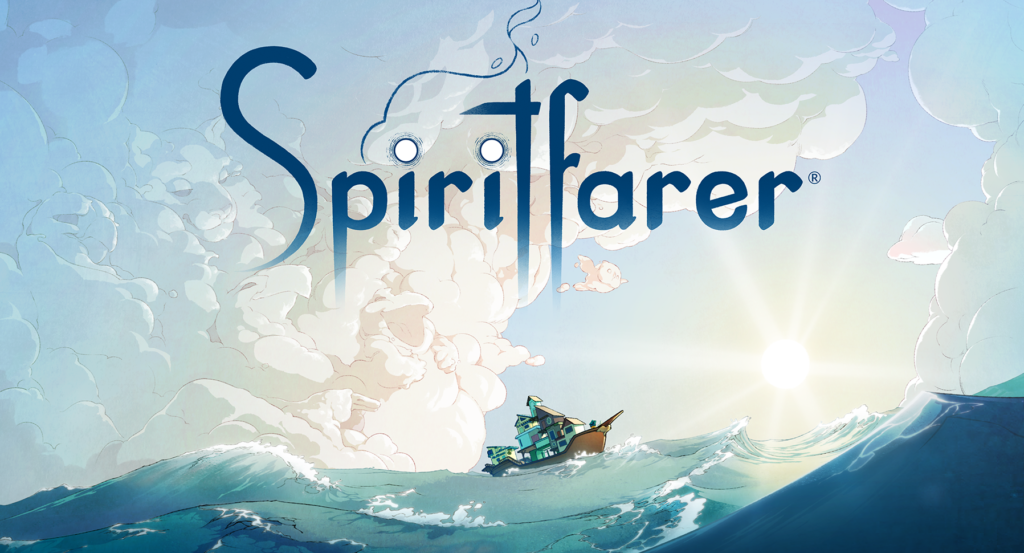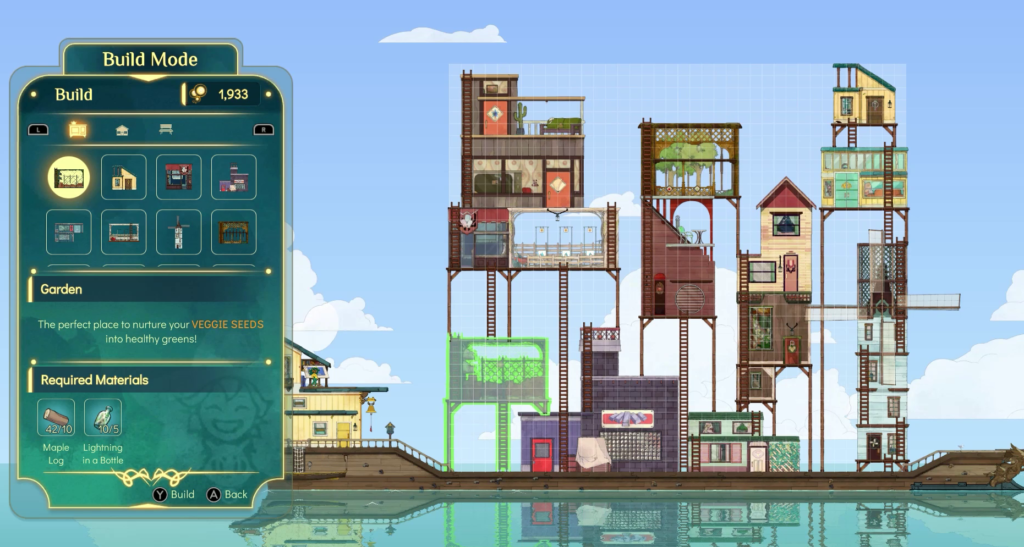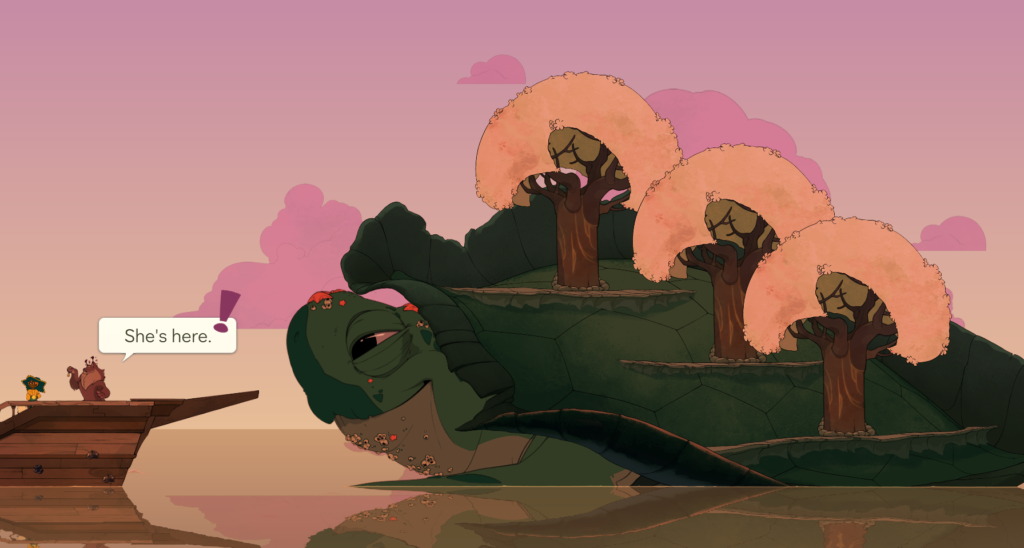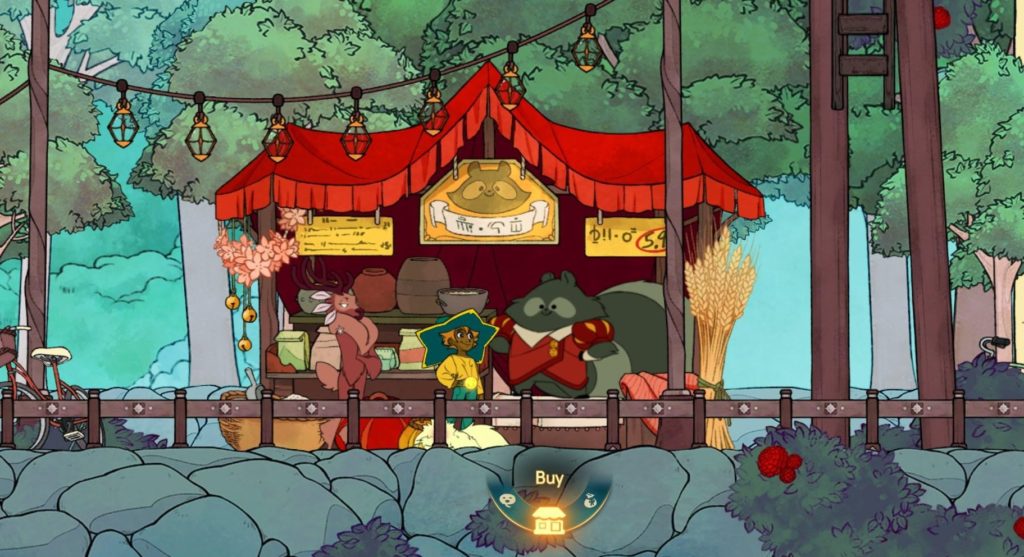
Hello everyone and welcome back to another blog post. Today we’re going to talk about a beautiful game that guides us through themes of life, death and everything in between, both visually and storywise. Have you ever considered becoming a ferryman for the departed? In Spiritfarer, you’ll embark on a heartwarming journey as Stella, a young starfarer tasked with guiding spirits to the afterlife.
Sailing Through Life: Spiritfarer’s Core Mechanics
In Spiritfarer we are tasked to guide the lost spirits to the afterlife. The game blends elements of life simulation and management games. The player will rely on a boat, which can be personalized and basically be transformed into a floating castle, where you’ll be able to include farms, kitchens, crops and everything needed to care for your passengers.
To improve and transform your boat, you’ll need to travel to the different islands around the world, in order to gather crafts and supplies, as well as dealing with the different merchants you’ll find along the way. In the boat you’ll also have to develop a relationship with the different souls populating your ship. In order to do so, you’ll need to pay attention to their needs and provide them with food and other necessities.
Not only you’ll be able to add different sections to your boat, but you’ll also need to keep upgrading your vessel, managing its resources, and ensuring smooth sailing. One of the charming elements that adds depth to Spiritfarer’s gameplay is the inclusion of a cat companion named Daffodil. More than just a cute addition, Daffodil plays a vital role in the player’s journey.

Daffodil is an expert angler, helping players to catch various fish for crafting, cooking, and gifting to spirits. This feline friend can collect resources like wood and ore, making life on the ship a little easier. Beyond their practical abilities, Daffodil provides a constant source of companionship, offering comfort and joy to the player
Daffodil’s presence enhances the overall experience, adding a touch of whimsy and warmth to the game’s often melancholic themes. The player is also equipped with a magic rod. The magic rod is a key item in Spiritfarer that allows players to interact with the world in unique ways. This versatile tool offers a range of functions. Players can use the magic rod to reshape the environment, creating new paths, clearing obstacles, or altering the landscape to suit their needs.
Some spirits have specific requests related to the environment. The magic rod can be used to fulfill these wishes, deepening the bond between the player and the spirit. The magic rod is often essential for solving environmental puzzles, requiring players to think creatively and experiment with its abilities. By providing players with the power to manipulate their surroundings, the magic rod adds a layer of strategic depth and exploration to the gameplay.
A Journey of Grief and Growth: Spiritfarer’s Narrative
Spiritfarer is more than just a game about managing a ship and caring for spirits; it’s a profound exploration of life, death, and the complexities of human emotion. The game’s narrative weaves together themes of grief, loss, and acceptance in a way that is both heartwarming and thought-provoking.
Spiritfarer delves deep into the process of mourning, allowing players to experience the various stages of grief alongside the spirits they care for. The game doesn’t shy away from the pain of loss, but it also offers a sense of hope and healing. As players guide spirits towards the Everdoor, they also embark on a personal journey of finding peace and acceptance. The game suggests that letting go is a natural part of life, and it’s okay to grieve while also celebrating the memories we share. Despite its somber themes, Spiritfarer is ultimately a celebration of life.
The vibrant world, the diverse characters, and the simple joys of daily living create a sense of wonder and appreciation for existence. By intertwining gameplay mechanics with a poignant narrative, Spiritfarer offers a unique and cathartic experience that resonates with players on a deep emotional level.

Spiritfarer’s Impact on Gaming and Players
Spiritfarer stands out as a unique and influential game that has left a lasting impression on both the gaming industry and its players. The game challenges traditional gaming conventions by prioritizing emotional depth over action or competition. Spiritfarer’s focus on storytelling, character development, and player empathy has paved the way for a new wave of games that prioritize narrative and emotional impact.
Many players have reported that Spiritfarer has helped them process their own grief and loss, offering a cathartic and healing experience. The game’s emphasis on finding peace and acceptance has resonated with countless individuals, providing comfort and support during difficult times. While Spiritfarer stands out as a unique experience, it shares some similarities with other titles:
- Stardew Valley: Both games involve elements of farming, crafting, and building relationships with a community. However, Spiritfarer’s focus on grief, loss, and the afterlife sets it apart.
- Animal Crossing: Like Spiritfarer, Animal Crossing emphasizes building relationships with charming characters. However, the tone and overall themes are significantly different.
- Cozy Grove: This game shares Spiritfarer’s focus on helping spirits find peace, but the gameplay mechanics and art style are distinct.
Spiritfarer has garnered widespread critical acclaim, earning praise for its innovative gameplay, compelling narrative, and beautiful art style. The game has received numerous awards and nominations, solidifying its position as a standout title in the indie gaming scene. This critical success has contributed to a broader shift in the gaming industry towards more narrative-driven and emotionally resonant experiences.
Spiritfarer’s impact can be seen in the increasing number of games that prioritize storytelling, character development, and player empathy. By demonstrating the commercial viability of such games, Spiritfarer has encouraged developers to take risks and explore new creative territories. Furthermore, the game’s focus on themes of grief and loss has helped to destigmatize these topics within the gaming community, creating a more inclusive and empathetic space for players.

A Final Farewell: Reflecting on Spiritfarer
Spiritfarer is more than just a game; it’s a profound exploration of life, death, and the human experience. Through its unique blend of gameplay, narrative, and emotional depth, the game has captivated players worldwide. By focusing on the deep themes, Spiritfarer has opened up important conversations and provided solace to countless individuals.
The game’s impact extends beyond its emotional core, as it has also influenced the gaming industry by demonstrating the commercial viability of narrative-driven experiences. Spiritfarer’s success has paved the way for a new generation of games that prioritize storytelling and player empathy.
We’ve talked constantly about how video games are a great channel for storytelling and Spiritfarer is a testament to the power of video games to evoke profound emotions and create lasting memories. It is a game that invites players to reflect on life, loss, and the beauty of human connection.
As Stella guides her spirit companions towards the Everdoor, players embark on a personal journey of healing and growth. Spiritfarer is a reminder that even in the face of sorrow, there is hope, beauty, and the enduring power of human spirit. If you want to know more about the developers and their other works, check out their website.
Nice!